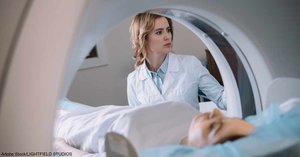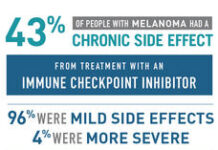Regular breast screening is vital for the early detection of breast cancer so that it can be treated and prevented from spreading. But in recent years, experts have disagreed about which age ranges should be screened and how often. And most recently, mammograms themselves have been under scrutiny, due to the fact that dense breast tissue, which shows up white on a mammogram, can disguise cancer, which also appears white.Often, women who undergo mammograms are not informed about their breast density, and the system for determining a person’s breast density level is arbitrary, so it varies widely from doctor to doctor. That means the roughly 40 percent of women with breast dense tissue are getting mammograms without realizing that the screening may actually not be capable of detecting cancer if they did have it. And that means thousands of women who do have cancer are going untreated for months or years until symptoms show up or until the tumor gets big enough to be detected on a mammogram. By the time these tumors are found, it can be too late for some women. Photo: Adobe Stock/Richman Photo
Photo: Adobe Stock/Richman Photo
In an effort to combat this life-threatening issue, researchers have been testing other means of screening for breast cancer. One of these is the MRI.A new study published in the New England Journal of Medicine suggests that it may be worth it to recommend additional regular MRI screening on top of mammograms for the roughly 10 percent of women with extremely dense breast tissue. Doing so may help identify breast cancer earlier in these women.Previous studies have shown similar results when comparing the rates of cancer found in mammograms versus mammograms and MRIs together, but they also included data for precancerous tumors, so there has been some debate about the use of this data, because it could lead to overdiagnosis and overtreatment of tumors that may never become cancerous. The new study, however, focused only on actual cancers to help make their data more useful. Photo: Adobe Stock/Richman Photo
Photo: Adobe Stock/Richman Photo
In this study, Carla van Gils, professor of clinical epidemiology of cancer at the University Medical Center Utrecht, and her team studied over 40,000 women in the Netherlands with extremely dense breast tissue. Each woman was assigned either mammography screening or a mammogram coupled with an MRI. They then measured the number of cancer cases caught in each group as well as the number of “interval cases,” meaning the number of cancer cases that were previously missed by a mammogram but then found in an MRI before the woman’s next scheduled mammogram.“If we can prevent those [interval cases], we know at least we are preventing clinically relevant tumors,” says van Gils, “and not just overdiagnosing.”If an MRI is truly diagnosing cancer correctly more often than a mammogram, then, theoretically, during follow-up screening, the MRI and mammogram combination should actually find cancer less often than mammograms alone, because most of the cancer cases were already caught two years prior during the original screening. This proved true in the study; during follow-up screening, 2.5 cases were found in mammograms and MRI screening per 1000 women, while 5 cases per 1000 women were found with mammograms alone.
 Photo: Adobe Stock/LIGHTFIELD STUDIOSEarly in 2019, a law was passed in the U.S. that requires doctors to inform women about their dense breast tissue following a mammogram. An explanation must also be included regarding how dense breast tissue can affect mammogram interpretations.Researchers believe that women who are diagnosed with dense or very dense breast tissue and who know that mammograms may not be enough to detect breast cancer are more likely to see their doctors if they notice any lumps or other strange symptoms. This allows doctors to schedule tests such as ultrasounds or biopsies that may detect cancer before the woman’s next mammogram.
Photo: Adobe Stock/LIGHTFIELD STUDIOSEarly in 2019, a law was passed in the U.S. that requires doctors to inform women about their dense breast tissue following a mammogram. An explanation must also be included regarding how dense breast tissue can affect mammogram interpretations.Researchers believe that women who are diagnosed with dense or very dense breast tissue and who know that mammograms may not be enough to detect breast cancer are more likely to see their doctors if they notice any lumps or other strange symptoms. This allows doctors to schedule tests such as ultrasounds or biopsies that may detect cancer before the woman’s next mammogram.
 Photo: Adobe Stock/AleksejMore research should be done on the subject before it is recommended to all women with very dense breast tissue, however. MRIs can sometimes deliver false positives, so better training for radiologists or some other means of reducing the number of false positives may be needed before they can be recommended for breast cancer screening.In future years, van Gil hopes to study whether combining mammograms with MRIs actually leads to a decrease in the number of breast cancer deaths. But for now, it’s enough to know that adding an MRI follow-up after a negative mammogram for women with very dense breast tissue is capable of catching cancer earlier and decreasing the rate of cancers found at follow-up screenings. Share on Facebook
Photo: Adobe Stock/AleksejMore research should be done on the subject before it is recommended to all women with very dense breast tissue, however. MRIs can sometimes deliver false positives, so better training for radiologists or some other means of reducing the number of false positives may be needed before they can be recommended for breast cancer screening.In future years, van Gil hopes to study whether combining mammograms with MRIs actually leads to a decrease in the number of breast cancer deaths. But for now, it’s enough to know that adding an MRI follow-up after a negative mammogram for women with very dense breast tissue is capable of catching cancer earlier and decreasing the rate of cancers found at follow-up screenings. Share on Facebook
Source








